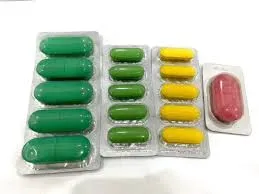- Afrikaans
- Albanian
- Amharic
- Arabic
- Armenian
- Azerbaijani
- Basque
- Belarusian
- Bengali
- Bosnian
- Bulgarian
- Catalan
- Cebuano
- Corsican
- Croatian
- Czech
- Danish
- Dutch
- English
- Esperanto
- Estonian
- Finnish
- French
- Frisian
- Galician
- Georgian
- German
- Greek
- Gujarati
- Haitian Creole
- hausa
- hawaiian
- Hebrew
- Hindi
- Miao
- Hungarian
- Icelandic
- igbo
- Indonesian
- irish
- Italian
- Japanese
- Javanese
- Kannada
- kazakh
- Khmer
- Rwandese
- Korean
- Kurdish
- Kyrgyz
- Lao
- Latin
- Latvian
- Lithuanian
- Luxembourgish
- Macedonian
- Malgashi
- Malay
- Malayalam
- Maltese
- Maori
- Marathi
- Mongolian
- Myanmar
- Nepali
- Norwegian
- Norwegian
- Occitan
- Pashto
- Persian
- Polish
- Portuguese
- Punjabi
- Romanian
- Russian
- Samoan
- Scottish Gaelic
- Serbian
- Sesotho
- Shona
- Sindhi
- Sinhala
- Slovak
- Slovenian
- Somali
- Spanish
- Sundanese
- Swahili
- Swedish
- Tagalog
- Tajik
- Tamil
- Tatar
- Telugu
- Thai
- Turkish
- Turkmen
- Ukrainian
- Urdu
- Uighur
- Uzbek
- Vietnamese
- Welsh
- Bantu
- Yiddish
- Yoruba
- Zulu
Nov . 18, 2024 13:46 Back to list
Gentamicin Sulfate Ointment for Effective Treatment of Bacterial Infections and Skin Conditions
Gentamicin Sulfate Salep A Comprehensive Overview
Gentamicin sulfate salep is a topical antibiotic ointment used for the treatment of various bacterial infections. Known for its potency against a wide range of Gram-negative and some Gram-positive bacteria, gentamicin is an aminoglycoside antibiotic that disrupts bacterial protein synthesis, effectively stopping infection and promoting healing. This article will explore the formulation, indications, application, and safety considerations of gentamicin sulfate salep.
Formulation and Composition
Gentamicin sulfate salep typically contains gentamicin sulfate as its active ingredient combined with a suitable base, such as a hydrophilic ointment or an emulsion. The formulation allows the gentamicin to penetrate the skin and target the infected area efficiently. Its semi-solid consistency makes it easy to apply and helps maintain moisture, which is essential for optimal healing conditions.
Indications for Use
Gentamicin sulfate salep is primarily indicated for the treatment of superficial skin infections caused by susceptible strains of bacteria. These conditions may include impetigo, infected ulcers, or infected seborrheic dermatitis. Additionally, it can be used for infections following minor surgical procedures or cuts and abrasions when the risk of bacterial contamination is high. Its application is not limited to humans; gentamicin sulfate salep may also be utilized in veterinary medicine for similar indications in animals.
gentamicin sulfate salep

Application Guidelines
For effective use, gentamicin sulfate salep should be applied to the affected area after thorough cleaning and drying of the skin. A thin layer of the ointment should be spread uniformly over the infected site, typically two to three times a day, or as directed by a healthcare professional. It is important to cover the area lightly to prevent excessive occlusion while ensuring the antibiotic reaches the tissue. Always wash hands before and after application to prevent the spread of infection.
Safety and Precautions
While generally regarded as safe when used topically, gentamicin sulfate salep can cause local side effects such as itching, rash, or redness at the application site. In rare cases, systemic absorption can occur, especially with extensive or prolonged use, leading to potential nephrotoxicity or ototoxicity. Therefore, it is crucial to adhere to the recommended duration of treatment, typically no more than one to two weeks, unless otherwise advised by a healthcare provider. Patients with known allergies to aminoglycosides should avoid using this medication.
Conclusion
Gentamicin sulfate salep serves as a vital tool in the management of superficial bacterial infections. Its efficacy, combined with ease of use, makes it a popular choice among healthcare professionals and patients alike. However, like all medications, careful consideration of its application and potential side effects is essential to ensure safe and effective treatment. If symptoms persist or worsen, seeking medical advice becomes important to reassess the treatment plan and explore alternative options. As the awareness of antibiotic resistance grows, ensuring the appropriate use of antibiotics like gentamicin is crucial in preserving their effectiveness for future generations.
-
Guide to Oxytetracycline Injection
NewsMar.27,2025
-
Guide to Colistin Sulphate
NewsMar.27,2025
-
Gentamicin Sulfate: Uses, Price, And Key Information
NewsMar.27,2025
-
Enrofloxacin Injection: Uses, Price, And Supplier Information
NewsMar.27,2025
-
Dexamethasone Sodium Phosphate Injection: Uses, Price, And Key Information
NewsMar.27,2025
-
Albendazole Tablet: Uses, Dosage, Cost, And Key Information
NewsMar.27,2025













